TRANSITIONING TO SOIL HEALTH SYSTEMS
COMMON CARBON MARKET PRACTICE CHANGES
*Recommended in-field strategies for achieving NLRS goals
Fertilizer
Application Timing*
Reduced Rate*
Use of Inhibitors
Use of Organic Fertilizer or Compost
Cover Crops
Grass*
Legume
Interseed
Perennial*
Cover Crop Termination (planting green, burn down, mechanical)
Tillage
Change in Type*
Change in Frequency*
No-Till*
Rotation
Added Crops
Reduced Fallow Periods
Added Perennials
Disclaimer: Table does not contain the complete list of recommended practices for carbon sequestration or N – P runoff reduction. Please refer to specific programs for a complete list of requirements.
MINIMUM TILLAGE CONSIDERATIONS
Tillage does not have to be cut out completely in a soil health system. Obvious issues to repair fields or smooth out new tile lines is needed to be able to farm. Tillage can be used as a tool to accomplish immediate needs, but when addressing long term benefits, intensive tillage may be doing more harm than good. When evaluating reducing your tillage, consider what goals you want to accomplish. By minimizing disturbance your soils can build aggregate stability, improve water holding capacity, increase infiltration, and keep soil in place. Some fields with highly erodible slopes are necessary to no-till but fields that are flat and high yielding might benefit in a minimum till system. Minimum tillage or conservation tillage is defined as practices that leave at least 30% crop residue on the surface. This can help intercept rainfall to reduce water erosion, reduce wind erosion, and help organisms like earthworms thrive. Some examples of reduced tillage practices include:
There are many different ways to define vertical tillage. Usually, the basis includes using an implement that prepares the seed bed with minimal residue and top soil disturbance. Unlike a shank on a conventional tillage implement, vertical tillage equipment uses rolling blades. Vertical tillage is a great option after aerial seeding fields with cover crops and needing a light pass of tillage to improve seed to soil contact.
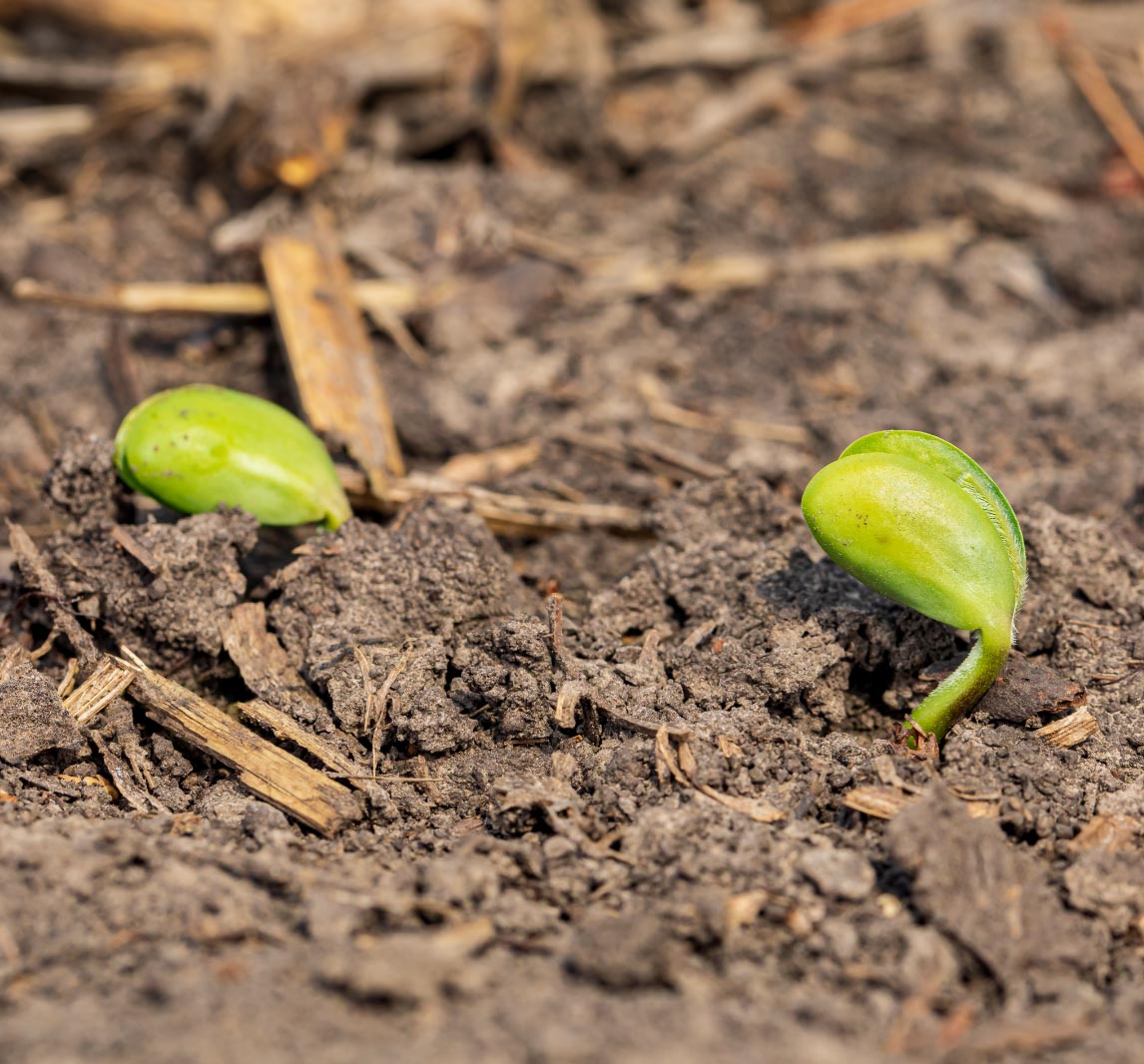
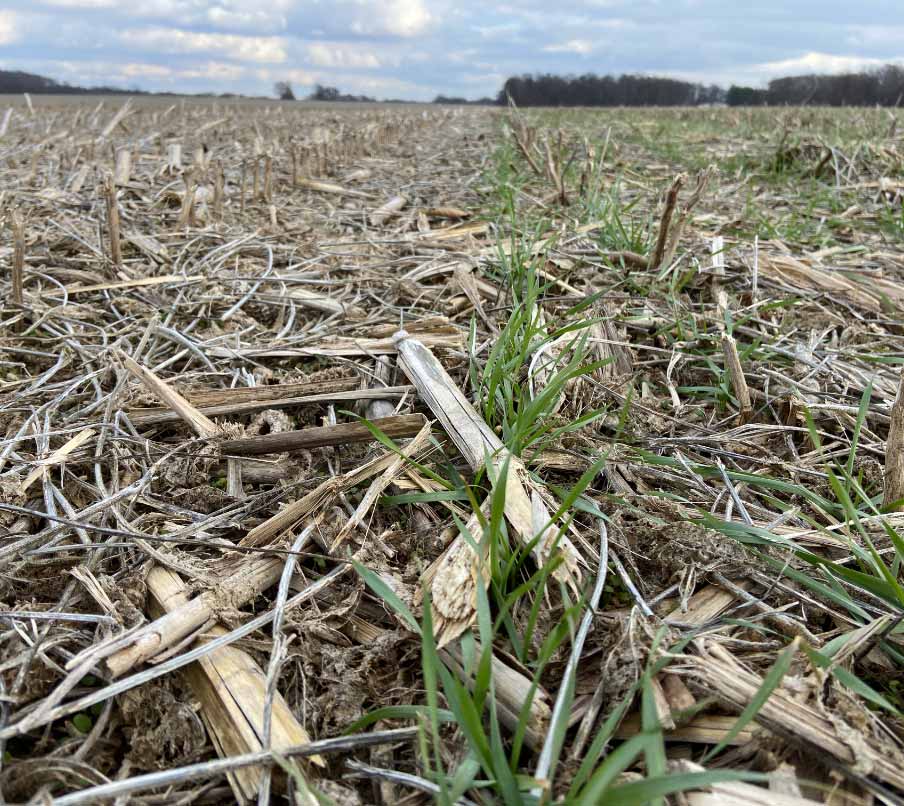
NO-TILLAGE CONSIDERATIONS
Switching from conventional tillage to no-tillage may cause concerns of soil compaction to arise. In the long-term, no-till is generally associated with lower rates of compaction compared to conventional tillage methods. This is because no-till promotes improved soil structure, water infiltration and holding capacity, root penetration, and habitat for soil organisms. However, some farmers see a yield loss during the first few years of transitioning to no-till as the system, and the farmer, adjust to this new management style. Consider these tips to reduce compaction’s impacts:
- Steer clear of field operations during wet conditions. Driving field equipment over wet soils can intensify compaction.
- Consider implementing cover crops at the same time as switching to no-till. Cover crops provide protection to the bare soil and can help lessen the impact of rain events that could cause surface sealing issues. Selecting plant species with varying root structures can also help break up potential compaction layers that could form.
- Reduce tire pressure in tractor and implement tires. Lower tire pressure spreads the equipment’s footprint out and reduces the risk of compaction.
- Two main reasons farmers utilize spring tillage are to freshen up the seed bed and air out the soil in preparation for planting. By not tilling the soil, farmers may feel concern that the soil will not dry out in time to allow for ideal conditions. Switching to no-till may require patience in the spring to avoid entering the field with equipment when soil moisture levels are high, which could lead to compaction and other issues. Overwintering cover crops are another option to help manage spring moisture in no-till systems. The cover crop can help take up excess moisture as it grows; but farmers need to be mindful of terminating the cover crop before soil moisture levels become excessively low. This is especially important if the following cash crop is corn.
- Strip tillage can be an option for utilizing precise seed bed preparation without disturbing the majority of the field. Strip tillage allows the cash crop row to have the advantage of what a tilled field provides during wet conditions, but allows the row space between to be able to build soil structure and improve infiltration, ultimately creating a practice that works together to combat inevitable spring rains. Strip tillage in cover crop fields is also a complementary system. For example, if you apply your covers in the fall and then strip afterward you are eliminating seed growth within the cash crop row. We have been able to observe great success with this in the spring where the cover crop was not able to be terminated timely due to wet conditions but seed bed competition was not threatened by the cover crop due to the strip’s elimination.
- When trying to utilize no-till and cover crops while navigating spring moisture, consider the cover crop row spacing. Planting your cover crop in 15” or 30” rows can still provide great soil health benefits without becoming intimidating during wet weather. Being able to plant down the rows between the cover crop mimics a no-till field. If equipment is available, combining a 15” cover crop and alternating strip till is a great option especially on flat, high yielding ground.
- Tile is usually the most profitable when it comes to investing in your land. Consider utilizing water level control structures. With control structures you may have the capability to raise and lower your water lines as your crop needs.
A no-till planter is key to deal with larger amounts of residue in a no-till system. Various elements can be added or modified on a planter to help ensure successful planting into no-till conditions, including:
- Row cleaners. Row cleaners come in varying forms, and it may require some experimentation to figure out what version works best for you considering the soil type, topography, soil moisture, and amount of residue. It’s important to remove residue from the zone where seed will be planted to prevent hairpinning issues.
- Gauge wheels. Gauge wheels provide the critical function of ensuring seed is planted at the same depth across a field. This is important to make sure that seeds emerge at the same time, as delayed or uneven emergence can cause yield losses in both soybean and corn. In no-till situations, residue and root balls can potentially impact the evenness off the ground, which might make the gauge wheels bounce slightly. You could consider experimenting with a narrower gauge wheel that would reduce the amount of ground the wheel will glide over.
- Closing wheels. Similarly to row cleaners, farmers have options when it comes to selecting closing wheels. Standard rubber closing wheels may not be the optimal choice in no-till situations, especially if soil moisture levels are higher than ideal, as they can cause sidewall compaction issues. A pair of spiked wheels is often better suited for moist conditions. Some farmers pair a rubber wheel and spiked wheel together, finding that suits their soil type and moisture content best. You may need to evaluate by year and field to determine what setup will work best for each situation.
COVER CROPS
Many resources are available to provide in-depth guidance on cover crop species selection, rates, planting, termination, and more. In this section, we summarize some key points to consider, but direct you to the Resource section for more information.
- Which cover crop species you select to use on your field should reflect the goals you hope to achieve from using cover crops. Some growers utilize cover crops to prevent erosion, build soil health, reduce nutrient runoff, manage weeds, provide grazing material for livestock, and more. The Midwest Cover Crops Council (MCCC) has an excellent Cover Crop Selector tool available for free on their website. You can select your state, county, current cash crops, and what goals you hope to achieve by utilizing cover crops. The tool will give you recommendations on what species work best based on the information you provided.
- Beginning cover croppers may want to start by planting a cover crop before soybeans, as soybeans are often more forgiving than corn. Planting a grass species, like cereal rye, barley, or even wheat, can be a good way to start because they are generally easy to terminate in the spring. Other species can be mixed in with the grass, like radish or rapeseed, which have taproot systems rather than the fibrous root system of grasses. Before corn, a clover variety could provide some nitrogen credit and could be mixed with a non-overwintering grass, like oats, to reduce the risk of nutrient tie-up before the corn. Incorporating species from different families and with different root structures adds diversity to the system. See the resources section for guides to assist you with species selection.
The Midwest Cover Crop Council’s Cover Crop Selector tool provides rate recommendations for single species and some cover crop mixes. This tool is a good starting place for cover croppers, and you can verify rates with your local NRCS, SWCD, and Extension staff, and the ISA Agronomy team. As you gain more experience with cover crops, you will find rates that work best for the goals you hope to achieve.
Growers utilize various means of planting cover crops, including aerial application by airplane, interseeding with modified hi-boy sprayers, no-till drilling following cash crop harvest, spreading seed with fertilizer followed by light incorporation, or even utilizing bin attachments on combine heads to seed during cash crop harvest. How you plant cover crops will depend on the equipment you have available or are willing to purchase or rent, as well as the time and money you are willing to invest. Aerial application or interseeding works well for species that do not overwinter and need to be planted earlier in the fall to establish a good stand. However, aerial methods of seeding are often dependent on receiving a rainfall shortly after application since the seed does not have as good seed to soil contact as it would through drilling or using light incorporation. If possible, plan aerial applications around rainfalls to ensure the seed gets off to a good start.
- Before planting corn, if you choose cover crop species that overwinter, spring cover crop termination ideally happens at least two weeks in advance of planting or when the cover crop is about 6-12 inches tall. Prior to planting soybeans, aiming to terminate about two weeks in advance of planting is a good goal, but soybeans can tolerate being planted into a green, living cover crop if necessary. This could be needed in wet springs when it’s difficult to get into the field to spray, or if you want to maximize the cover crop’s benefit.
- One key consideration during termination is the cover crop’s maturity stage. Using cereal rye as an example, as growth continues from the vegetative to reproductive stages, the carbon to nitrogen ratio increases. This means as the cereal rye starts to boot (head is visible in sheath) the tissue of the grass will become harder to break down. This often leads to nitrogen tie up and special considerations to residue turn over. Often experienced cover croppers will grow cereal rye until anthesis (pollen shed) and roll the cereal rye with a crimper. This is a method to maximize soil health, combat weeds, and reduce chemical input. However, this practice is not recommended unless planning took place ahead of time to make the proper preparations. If you are having trouble with your cover crop termination or have questions, we can help provide you answers or find an advisor.

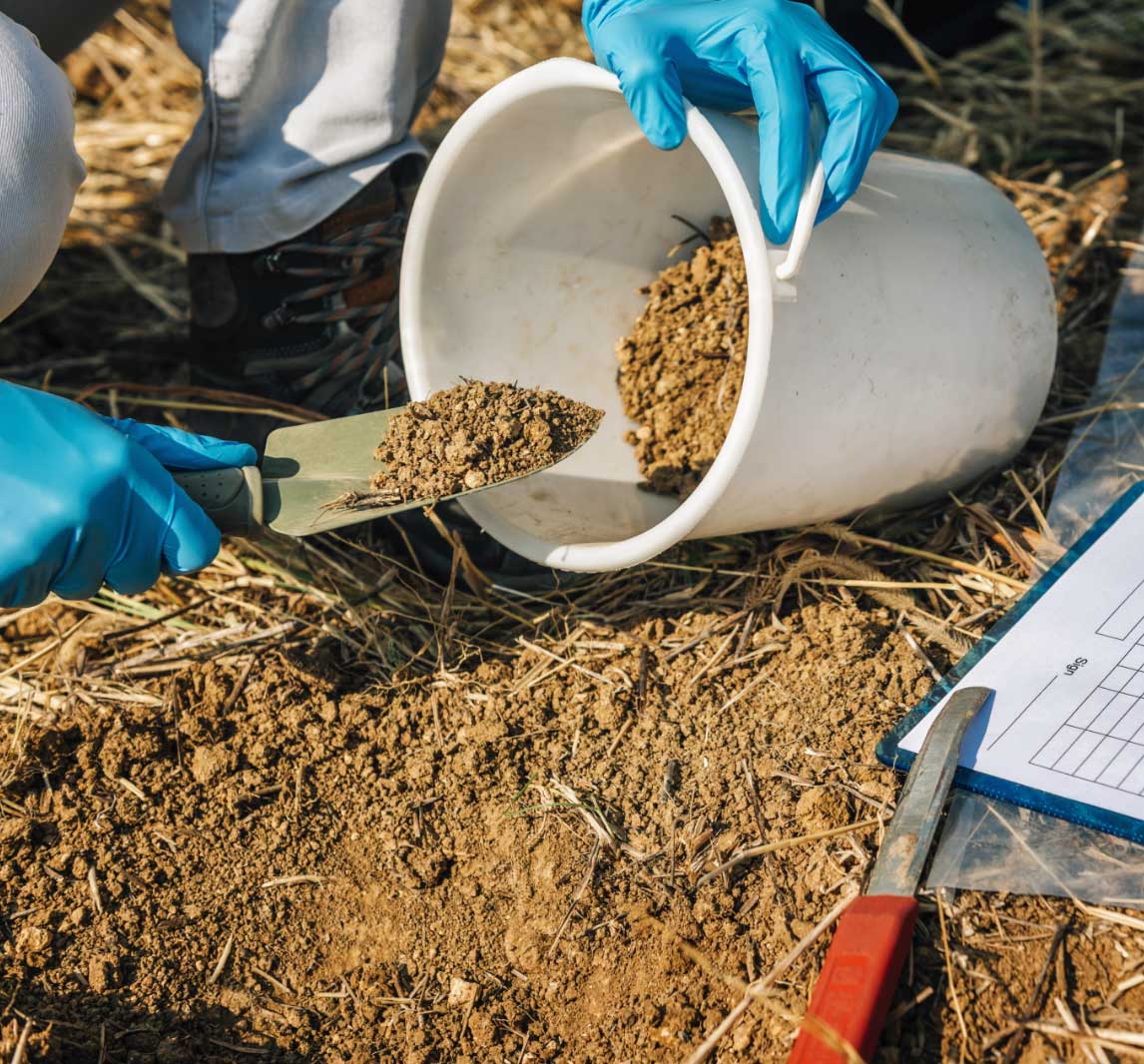
NUTRIENT MANAGEMENT
Routine soil sampling is important to help you make fertilizer application decisions. It is helpful to know the nutrient content of your soil before putting on fertilizer in order to apply what your crops really need when they need it, and to avoid overapplication. In no-till and cover crop systems, it is especially important to know what nutrients are available for your cash crop to perform at its best.
Applying nitrogen to corn in-season ensures it is available at the time when the corn crop needs it. If cover crops were used before corn, applying 30-50 pounds of nitrogen with the planter can help get the crop off to a good start. Sidedressing the remainder of the nitrogen in-season lessens runoff and leaching potential.
Pre-plant and in-season nitrogen applications have been utilized by farmers and researchers to understand the best application timing to avoid losing nitrogen within the system while still maximizing nitrogen use efficiency in the plant. Follow the Illinois Nutrient Research and Education Council for information to find what research is applicable to you: https://www.illinoisnrec.org/tag/nitrogen/
In no-till situations, its commonly known that nutrient stratification can occur in the top inches of the soil profile, especially with phosphorus and potassium. Soil sampling at different depths is important to help you understand if nutrients are becoming stratified near the surface and not reaching deeper rooting zones. If you think you may have nutrient stratification issues, take a shallow sample of only 2”-3” deep and a separate sample from 3”-7” or 8” (keep in mind that for routine soil sampling, you should capture the whole depth of 0-7” or 8” in a single sample. Reference the specific protocols with the lab you are working with). If your samples reveal that stratification is occurring for phosphorus, consider a subsurface banding application instead of surface broadcasting. In some situations, especially on lower fertility soils, a tillage pass every 3-5 years could help incorporate nutrients into lower depths.
Understanding the right rate of product for your region and with fluctuating fertilizer prices can be difficult. The Maximum Return To N calculator can help provide what N rates are most profitable using university data. This calculator can be used as a guideline to benchmark the most efficient N rate or even help determine a reduced rate to trial on fields to start evaluating your specific field’s optimal rates.
LOOKBACK CREDITS
Many farmers who have utilized conservation practices on their land for years prior to establishment of carbon or ecosystem markets have questions about receiving credit for carbon offsets or other ecosystem services provided during that time. This is often referred to as a “lookback” credit. Some markets are now considering prior years of conservation practice use, while others are continuing to focus on what changes can be made in the future. Remember that this space is rapidly evolving, so it’s best to talk directly with a representative of the market of your choosing to understand exactly what they can offer you.
The Land O’Lakes Truterra Platform and Nori have had periods of lookback credits. It all depends on what the credit buyer is willing to purchase.
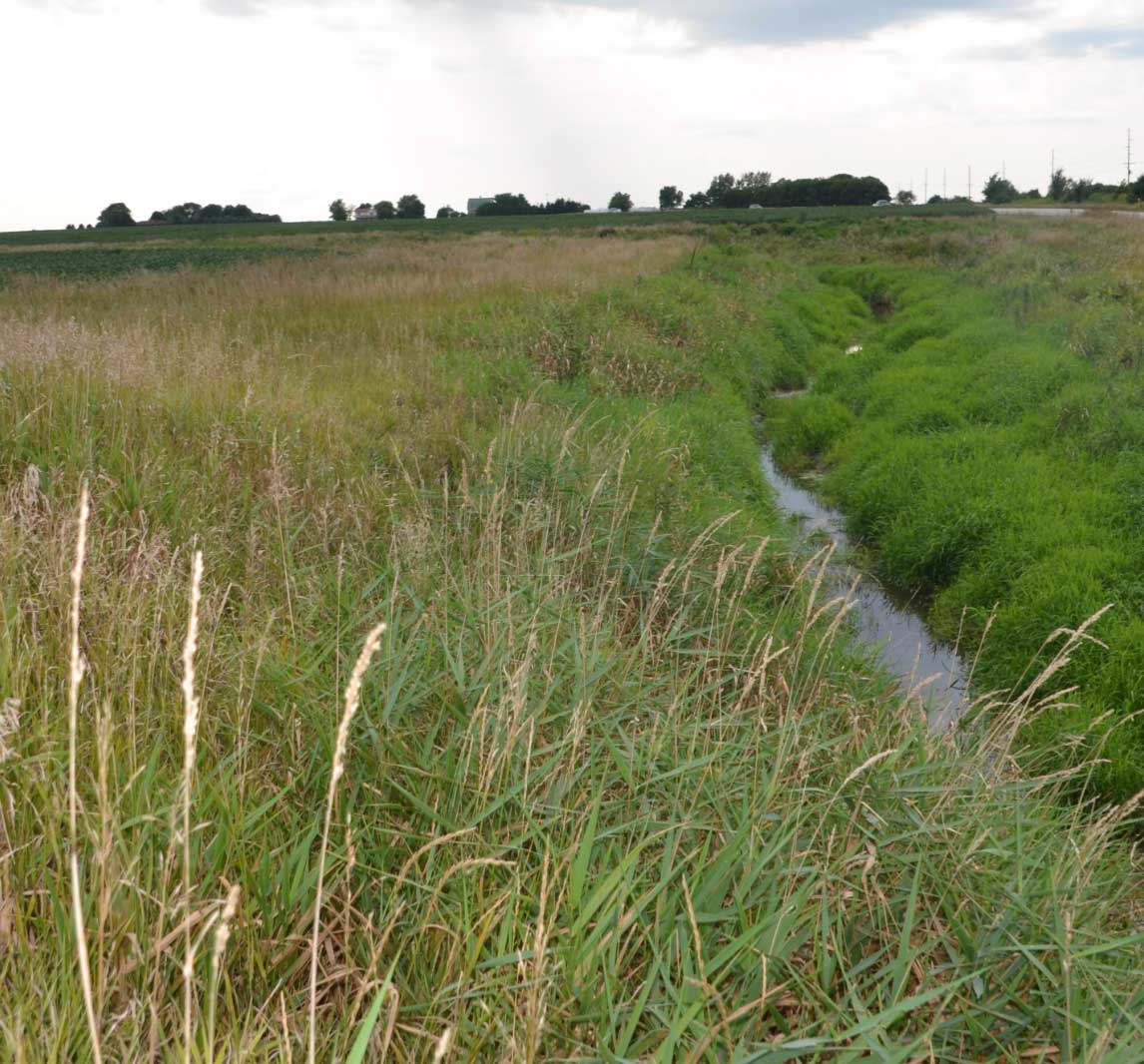
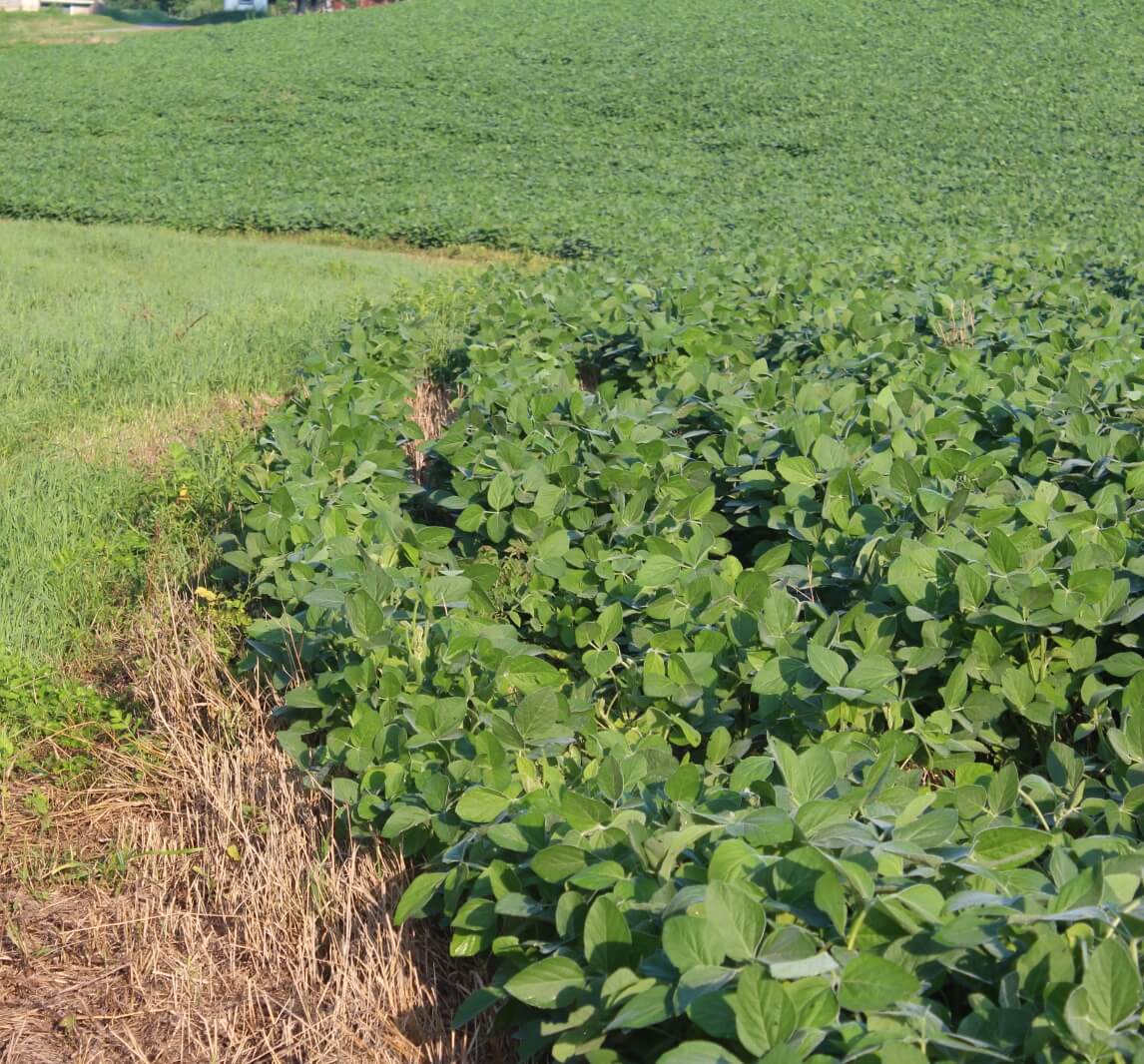
PRACTICES YOU CAN CHANGE EVEN IF YOU ARE A LONG-TERM NO-TILLER OR COVER CROPPER
A practice change may be an option if you currently no-till one cash crop and conventional till the other. A transition to minimum or no-till within your current historical cropping system may qualify as a new practice change.
Some programs offer a practice change based on your product type (like switching from synthetic sources of nitrogen to an organic source), timing of application, or rate of nitrogen. Adding an inhibitor to your nitrogen application could be a qualifying practice as well.
Opportunities may be available to increase diversification of a cash crop. Examples could include pennycress, wheat, hybrid rye, and more.
GOT A CARBON QUESTION?
We can help! Just click the button and follow the prompts to submit your question.




 and then
and then